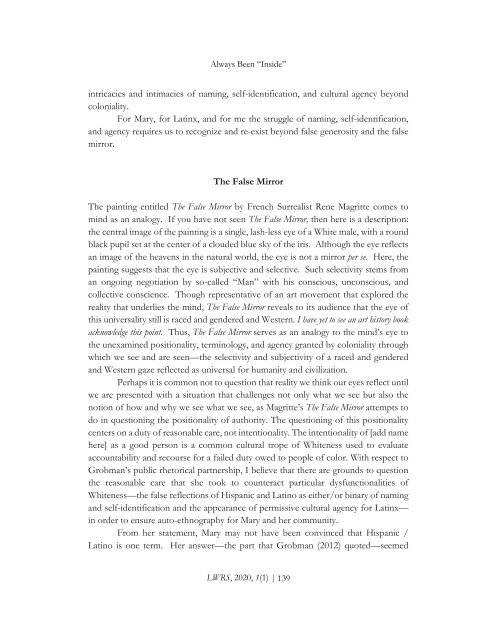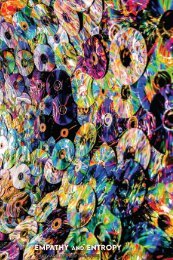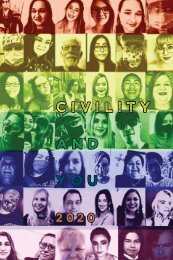LWRS June 2020 Volume 1, Issue 1
Inaugural Issue co-edited by Yndalecio Isaac Hinojosa and Isabel Baca
Inaugural Issue co-edited by Yndalecio Isaac Hinojosa and Isabel Baca
You also want an ePaper? Increase the reach of your titles
YUMPU automatically turns print PDFs into web optimized ePapers that Google loves.
Always Been “Inside”<br />
intricacies and intimacies of naming, self-identification, and cultural agency beyond<br />
coloniality.<br />
For Mary, for Latinx, and for me the struggle of naming, self-identification,<br />
and agency requires us to recognize and re-exist beyond false generosity and the false<br />
mirror.<br />
The False Mirror<br />
The painting entitled The False Mirror by French Surrealist Rene Magritte comes to<br />
mind as an analogy. If you have not seen The False Mirror, then here is a description:<br />
the central image of the painting is a single, lash-less eye of a White male, with a round<br />
black pupil set at the center of a clouded blue sky of the iris. Although the eye reflects<br />
an image of the heavens in the natural world, the eye is not a mirror per se. Here, the<br />
painting suggests that the eye is subjective and selective. Such selectivity stems from<br />
an ongoing negotiation by so-called “Man” with his conscious, unconscious, and<br />
collective conscience. Though representative of an art movement that explored the<br />
reality that underlies the mind, The False Mirror reveals to its audience that the eye of<br />
this universality still is raced and gendered and Western. I have yet to see an art history book<br />
acknowledge this point. Thus, The False Mirror serves as an analogy to the mind’s eye to<br />
the unexamined positionality, terminology, and agency granted by coloniality through<br />
which we see and are seen—the selectivity and subjectivity of a raced and gendered<br />
and Western gaze reflected as universal for humanity and civilization.<br />
Perhaps it is common not to question that reality we think our eyes reflect until<br />
we are presented with a situation that challenges not only what we see but also the<br />
notion of how and why we see what we see, as Magritte’s The False Mirror attempts to<br />
do in questioning the positionality of authority. The questioning of this positionality<br />
centers on a duty of reasonable care, not intentionality. The intentionality of [add name<br />
here] as a good person is a common cultural trope of Whiteness used to evaluate<br />
accountability and recourse for a failed duty owed to people of color. With respect to<br />
Grobman’s public rhetorical partnership, I believe that there are grounds to question<br />
the reasonable care that she took to counteract particular dysfunctionalities of<br />
Whiteness—the false reflections of Hispanic and Latino as either/or binary of naming<br />
and self-identification and the appearance of permissive cultural agency for Latinx—<br />
in order to ensure auto-ethnography for Mary and her community.<br />
From her statement, Mary may not have been convinced that Hispanic /<br />
Latino is one term. Her answer—the part that Grobman (2012) quoted—seemed<br />
<strong>LWRS</strong>, <strong>2020</strong>, 1(1) | 139





